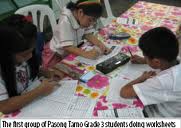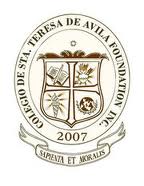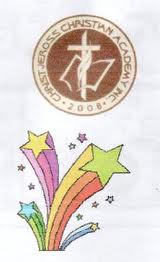Sponsored Links
A Review of Three (3) Schools in Metro Manila
THE FOLLOWING SCHOOLS were visited, reviewed, and evaluated in relation to the philosophical, psychological, and sociological aspects or factors that affect the students enrolled in each academic institution.
I. PASONG TAMO ELEMENTARY SCHOOL (PTES)
Tandang Sora Avenue, Pasong Tamo, Quezon City, Philippines
 A) Philosophical aspect
A) Philosophical aspect
As the school aims and endeavors to transform students to become citizens who are productive, self-disciplined, and literally equipped and responsive to the demands of globally competitive society with the aspiration of achieving satisfying lives for the service of God, family, and country, we can say that the school adheres to the principles of pragmatism and theism. It is pragmatic or practical in the sense that it prepares the students to be intellectually and academically ready for higher education (secondary education) as it follows the Basic Education Curriculum prescribed by the Department of Education. It is theistic in the sense that it acknowledges the importance of serving God through righteous living as it states in its mission the noble aim “to produce critical thinking students with excellent performance imbibed with moral values.”

B) Psychological factors
Immersed in an area that is fast becoming highly commercial, the Pasong Tamo Elementary School is fortunate to have a comparatively spacious compound surrounded by fences, making the environment in many ways suitable for learning. The problem however, as also the case with other public schools, is the overcrowding of students in classrooms. According to Dr. Juanita M. Pangilinan, the principal, the school has an average of 60 students per class which, as one would expect, psychologically affects the teaching-learning process. It is therefore a challenge among its teachers and school administrators to be more creative and diligent to offset the obstructions.
C) Sociological factors
One of the things considered as contemporary social problems is traffic congestion. As Tandang Sora Avenue is widely known for its heavy traffic, the students at Pasong Tamo are necessarily affected by it.
The socio-economic status of the students and the location of their residences also affect their study. Most of PTES students belong to the socio-economic class C and D, and many of whom are even coming from far neighborhoods of Luzon and Upper Banlat. When rains come, many of them could not come to school especially when it floods for it would take them Php 25 tricycle fare to attend classes.
II. COLEGIO DE STA. TERESA DE AVILA FOUNDATION INC. (CDSTDAFI)
Novaliches, Quezon City, Philippines
 A) Philosophical aspect
A) Philosophical aspect
This tertiary school is a clear-cut pragmatic school as it practically offers ladderized curricula. Taking a course in this school enables a student to get double qualifications: college diploma and national certificate/s.
Through this program, a student’s enrollment in a particular academic year would not be entirely worthless, even if he decides to stop pursuing a 4-year course at some point, for the units he has taken plus the ‘technical-vocational’ subjects he finished could enable him to get TESDA diploma or certificate which, in turn, could help him land a job in the country or abroad. After earning some amount by working for some time, a person who stopped studying due to financial problems could then pursue and finish his studies to get better jobs after graduation.
B) Psychological factors
The program itself has psychological effects to students. In some courses, a student would strive to attain the necessary skills every academic year to pass the TESDA administered test and earn a National Certificate, and be promoted to a higher year level. Knowing that every skill he/she masters qualifies him/her to receive a certificate which he/she could use to get a job, a student is better motivated to study.
C) Sociological factors
The institutions and business enterprises near the school also help the students, implicitly and otherwise. As malls like Robinsons and SM Lagro are near the school, students could get part-time jobs while being enrolled at CDSTDAFI. Thus, for these private companies to hire working students is in a way to help them finish their studies.
III. CHRIST JEROSS CHRISTIAN ACADEMY INC. (CJCAI)
Bagong Silang, CaloocanCity, Philippines
 A) Philosophical foundations
A) Philosophical foundations
Based on its vision, mission, and goals, the school advocates idealism (promoting high standards or principles) and supernaturalism (belief in and reverence to the Supernatural Being or God).
As the school aims to shape the moral values of the young ones so that they will become beneficial to the community, it also intends to develop students to become Godly by providing competent, biblically based, caring, and Christian environment that enables children to grow and learn with love and respect. It is also the goal of the school to mold students to become not only critical but also compassionate thinkers. Furthermore, the school commits to respond to the Great Commission by providing a complete educational experience in a spiritual atmosphere.
B) Psychological factors
Having a school that highly promotes religious atmosphere in itself provides psychological motivation to students. Believing that what they do in school does not only prepare them for life outside the school but also somehow gives glory to God, students are greatly inspired to focus and study hard. Moreover, having teachers and school administrators practicing virtues like kindness, altruism, and disciple encourages the students to exemplify the same values.
C) Sociological factors
In CJCAI, the social institutions that have involvement in the study of the students are their respective families, the immediate government unit (barangay government), and the owners of the school themselves.
As the school owners willfully allow the barangay activities to be done in the school compound, the school has established a good relationship with the barangay officials, eventually for the benefits also of its students.
 The school owners themselves grant numerous scholarships to poor deserving students. In fact, when the school was just beginning, the owners granted full scholarship to 16 out of their 48 students.
The school owners themselves grant numerous scholarships to poor deserving students. In fact, when the school was just beginning, the owners granted full scholarship to 16 out of their 48 students.
How to cite this article:
Jensen DG. Mañebog. “A Review of Three (3) Schools in Metro Manila” @ www.OurHappySchool.com




